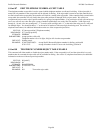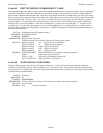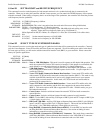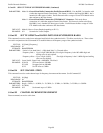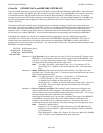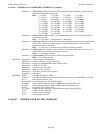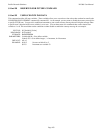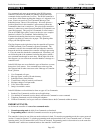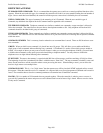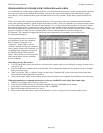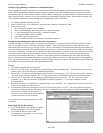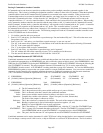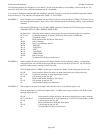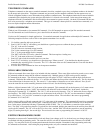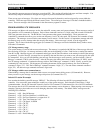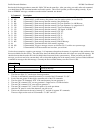
Pacific Research Solutions RI-300e User Manual
Page 104
DEFINITION of TERMS
STANDARD USER COMMAND:
This is a command that the repeater user would use to control predefined functions of the
repeater. When the user sends this type of a command, the controller will look for an exact match including the total number of
digits. Once a match has been identified, the controller will then process a macro that is defined by the user command.
USER S-COMMAND:
This type of command is the renaming of an S-Command. When the user sends this type of
command, any additional data required in the S-Command must be appended to this command.
TELEPHONE COMMAND:
Telephone commands are similar to standard user commands, except extra data is allowed to
follow the command. The controller uses the extra data as the telephone number to dial. Only telephone off-hook and dial
commands should be included in this group of commands.
WILDCARD COMMAND:
These commands are similar to standard user commands, except extra data is allowed to follow
the command. The controller will save the extra data and uses all or part of the data to fill in missing data in System Commands
within the macro.
COMMAND NUMBER:
This is a memory location where the user command data is stored. There are 200 locations to store
user commands.
GROUP:
When you build a user command, it is placed into one of 8 groups. This will allow you to enable and disable a
single group of user commands without affecting every command. S-Command 15 is used to select which group to enable or
disable. An example of where you may want to use this feature is when you are using the telephone off-hook; you would want
to disable other commands so they aren’t processed when dialing a telephone number. You may choose to disable the
telephone access at night without affecting other commands.
START LINE:
The macro data memory is organized with 999 lines of data storage, each line consisting of 24 digits of data.
The beginning of each line is numbered with what is called the macro “Start Line”. The user commands, scheduler, events and
timers use the start line to tell the controller where to start processing the macro. When building a macro, you can allow the
data in a single macro to use multiple lines.
COMMAND NAME:
This is a 1 to 5 digit “name” that the repeater user will key into their DTMF equipped radio to control
the repeater. When the controller receives a command, it is compared with every stored programmed command until a match is
found. The controller then reviews the command parameters to determine how to handle the command.
MACRO:
This is a number of S-Commands that are grouped together. When the controller is asked to process a macro, it
gets each S-Command in the macro and processes each command until an end of macro flag is found. Macros can also consist
of only one S-Command.



